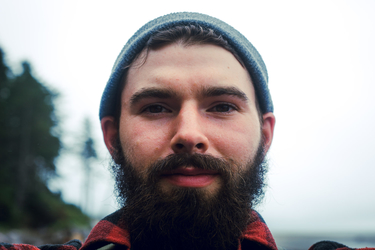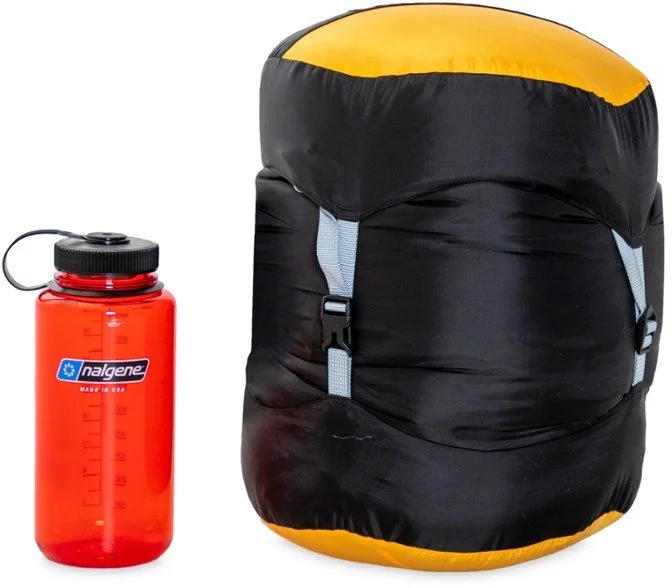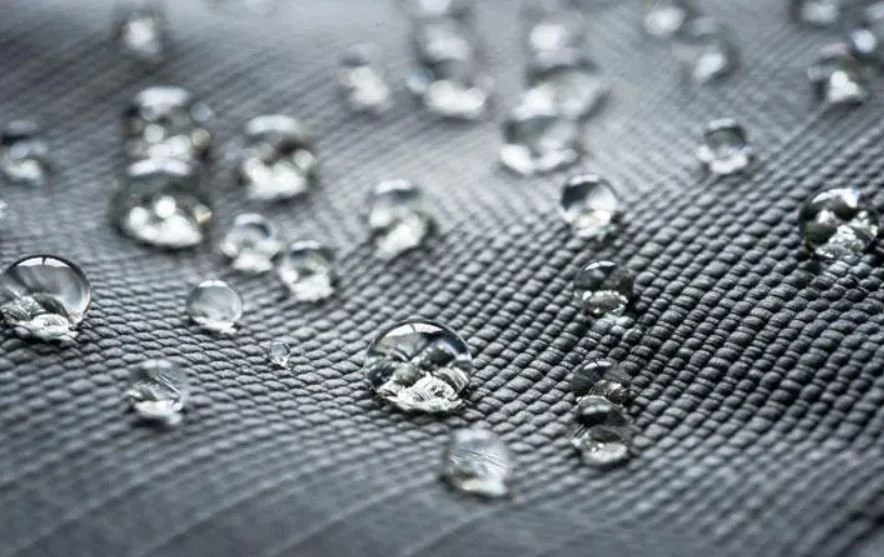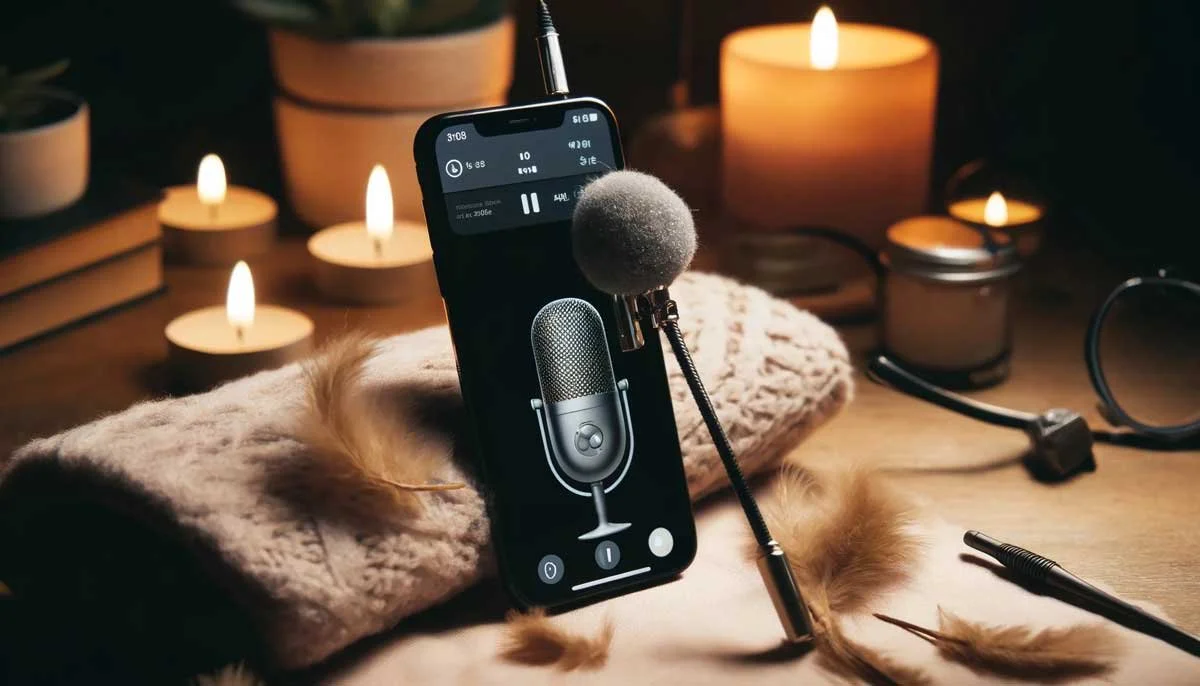Best Sub Zero Sleeping Bag | Extreme Cold Backpacking
Learn about the most important sleeping bag features and see our top recommendations!
Whether you’re bagging peaks in the heart of winter or just a cold sleeper, sub zero sleeping bags can make all the difference on your trip.
However, choosing the best backpacking sleeping bag for sub zero temperatures can be a challenge and cost a pretty penny.
In this post, you’ll learn about what features are most important, and which ones are nice to have, so you can make the best purchasing decision for yourself and your budget.
Best Sub Zero Sleeping Bags for Backpacking
Below you’ll find my recommendations for the best sub zero sleeping bags for almost any budget.
The recommendations are sorted by temperature rating, from less than 0°F to -40°F.
Summary of results:
Budget -10°F: Marmot Wind River
Best -10°F: Mountain Equipment Snowline
Budget -20°F: Mountain Hardwear Lamina
Best Value -20°F: Nemo Sonic
Best -20°F: Mountain Equipment Iceline
Best -40°F: Mountain Hardwear Phantom
Best Budget -10°F
The Marmot Wind River is the best sub zero sleeping bag for backpackers on a budget.
For it’s price, the Wind River offers many features that make the bag quite versatile for temperatures no colder than -10°F:
650 Fill Power Down - Decently high fill power offering good weight-to-warmth ratio.
Down-Filled Draft Collar - Prevents cold air from entering through the hood of the bag. Offers some neck support.
Stash Pocket - Great for keeping small items warm through the night. Perfect for ceramic water filters and phones.
Multi-Baffled Hood - Cinching hood prevents heat loss.
Dual Side Zippers - Regulate temperature and easy climbing in/out of the bag.
Footbox Zipper - Another temperature regulation option.
Bottom Line: For the price, the Marmot Wind River has a very attractive feature set. The many temperature regulating options make the bag great for summit hikes, as you can vent the bag at lower elevations, and zip it up tight to lock in all the heat needed to stay warm on the peaks. However, considering its weight and massive stuffed size, it’s best for short summit trips with minimal spent miles on the trail.
| Warmth | Weight | Fill Weight | Fill Power | Stuffed Size | Shoulder Girth | Hip Girth |
|---|---|---|---|---|---|---|
| -10°F | 4 lbs 1.6 oz | N/A | 650 | 1,607 cu in | 64 in | 59 in |
Pros
- Affordable
- Hydrophobic Down
- Stash Pocket
- Temperature Regulation
Cons
- Heavy for its warmth
- Bulky Stuffed Size
Best Overall -10°F
The Mountain Equipment Snowline is the best -10°F sleeping bag for backpacking on the market, hands down.
Built for serious expeditions, the Snowline is ultralight and ultra compact.
Thanks to its 800 fill power down, the Snowline is roughly half the size of the Marmot Wind River when compressed in its stuff sack.
Additional features that make the Snowline a premier option for -10°F:
GORE-TEX® INFINIUM™ 10-Denier Outer Shell - Durable but light, exceptionally breathable and highly protective against snow and the effects of condensation.
EXL® Technology - Minimizes dead airspace around the body and pulls fabric away from the down, allowing it to loft fully.
Generous Fit - Longer and wider, it affords greater comfort when used for long periods of time; additional clothing can be worn or stored within the bag.
Ground-Level Side Seams - Provide maximum thermal efficiency by increasing the surface volume of the top-half and ensuring sidewalls can wrap uninterrupted around the main body.
7-Baffle, Low-Volume Anatomically Shaped Hood - Provides exceptional down control for long-lasting insulation.
Lode Lock System - One-handed, quick-release closure uses 2 captivated internal magnets to draw the locking mechanism together and ensure that once connected it cannot be accidentally opened.
Stash Pocket - Inner pocket keeps essentials warm and dry
Waterproof Stuff Sack
Bottom Line: The Mountain Equipment Snowline sleeping bag is the premier option when it comes to -10° bags. It’s ultralight, ultra compact, and the Gore-Tex shell helps protect the down from moisture while keeping the bag from feeling sticky should you begin to sweat. The only thing that would make this bag better would be a hydrophobic down coating.
| Warmth | Weight | Fill Weight | Fill Power | Stuffed Size | Shoulder Girth | Hip Girth |
|---|---|---|---|---|---|---|
| -9°F | 3 lbs 5 oz | 2 lbs 3 oz | 800 | 543 cu in | 62 in | 55 in |
Pros
- Ultralight
- Ultracompact
- Gore-Tex outer shell
- Comfortable
Cons
- Expensive
- Down not hydrophobic
Best Budget -20°F
The Mountain Hardwear Lamina is the best budget -20°F sleeping bag and the most affordable bag in this post.
The Lamina is so affordable because it is made with synthetic insulation, instead of down.
However, this budget sub zero bag comes with a cost; compressed size and weight.
Coming in at a hair under six pounds, the Mountain Hardwear is the heaviest sleeping bag in this entire post, but compresses down to a very small size, taking the #3 spot in compressed size.
Another factor in the heavy weight of this bag is the 30D nylon shell with a water repellent coating. This is a more robust shell than most other bags on this list and could be a good choice if you’re rough on gear.
Features:
Thermal.Q Insulation - Insulates when wet and reduces impact on the planet (80% recycled).
Shaped Draft Collar - Blocks the escape of warm air from inside the bag.
Contoured Footbox - Follows natural foot position for maximum warmth and comfort.
Glow in the Dark, Reflective Zipper Pull
Bottom Line: The Mountain Hardwear Lamina is a good choice for extreme cold backpackers/climbers on a budget who are willing to carry a little extra weight. Thanks to the synthetic insulation, the bag packs down to a small size and has a roomy cut for comfort and storing clothes and other items. I only wish it had an internal stash pocket.
| Warmth | Weight | Fill Weight | Fill Power | Stuffed Size | Shoulder Girth | Hip Girth |
|---|---|---|---|---|---|---|
| -20°F | 5 lbs 15.7 oz | 4 lbs 3 oz | Synthetic | 988 cu in | 64 in | 58 in |
Pros
- Affordable
- Ultracompact
- Robust, water resistant shell
- Insulates when wet
Cons
- Heavy
- No internal stash pocket
Best Value -20°F
The Nemo Sonic is the best value -20°F sleeping bag.
Falling between the Mountain Hardwear Lamina and Mountain Equipment Iceline in price, the Nemo Sonic is a good balance between warmth, weight, compressed size, and features.
With 800 fill power, hydrophobic down, the Sonic compresses down to an impressive 762 in³, making it one of the smallest compressed sub zero bags available.
Features:
Thermo-Gills™ - Multi-stage zipper system that increases the bag's usable temperature range and allows you to fine-tune your temperature.
800 Fill Power, Hydrophobic Down - Retains warmth in extra-cold conditions.
Toester™ Footbox - keeps feet warmer, provides a waterproof barrier against tent wall condensation and protects down from moisture while drying damp clothes inside the footbox
Stretch Construction - Allows for comfortable side sleeping.
Cinching Hood - Prevents heat loss.
Bottom Line: The Nemo Sonic is one of the smallest compressed sub zero bags out there and is ultralight. With a modest price tag, flexible build for side sleepers, and comfort from -20° to 40°F rating, the Sonic offers a lot of value for its price and may be the last sleeping bag you ever need. It’s no surprise that it won the Backpacker Editors’ Choice award.
| Warmth | Weight | Fill Weight | Fill Power | Stuffed Size | Shoulder Girth | Hip Girth |
|---|---|---|---|---|---|---|
| -20°F | 3 lbs 14 oz | 2 lbs 5 oz | 800 | 762 cu in | 63 in | 58 in |
Pros
- Ultralight
- Ultracompact
- Hydrophobic Down
- -20°F to 40°F with Thermo-Gills™
- Side Sleeping
Cons
- No internal stash pocket
Best Overall -20°F
The Mountain Equipment Iceline is the best overall -20°F sleeping bag available.
Compressing down to just 720 in³, it’s even smaller than the Nemo Sonic when compressed and 4 oz lighter.
Other nice-to-have features include:
GORE-TEX® INFINIUM™ 10-Denier Shell - Durable but light, exceptionally breathable and highly protective against snow and the effects of condensation.
Expedition Fit - Roomy fit for storing items you want to keep warm and has improved loft and thermal efficiency.
Ground-Level Side Seams - Provide maximum thermal efficiency by increasing the surface volume of the top-half and ensuring sidewalls can wrap uninterrupted around the main body.
7-Baffle, Low-Volume Anatomically Shaped Hood - Provides exceptional down control for long-lasting insulation.
Lode Lock System - One-handed, quick-release closure uses 2 captivated internal magnets to draw the locking mechanism together and ensure that once connected it cannot be accidentally opened.
Stash Pocket - Inner pocket keeps essentials warm and dry
Waterproof Stuff Sack
Bottom Line: The Mountain Equipment Iceline is the best -20°F sleeping bag money can buy…and it’s not cheap. However, if you’re serious about cold weather backpacking, the space and weight savings, without compromising warmth, is well worth it.
| Warmth | Weight | Fill Weight | Fill Power | Stuffed Size | Shoulder Girth | Hip Girth |
|---|---|---|---|---|---|---|
| -22°F | 3 lbs 10 oz | 2 lbs 3 oz | 800 | 720 cu in | 62 in | 55 in |
Pros
- Ultralight
- Ultracompact
- Gore-Tex outer shell
- Comfortable
Cons
- Expensive
- Down not hydrophobic
Best Overall -40°F
When it comes to -40°F sleeping bags, there aren’t many options and all of them are expensive.
They’re so expensive due to the extensive research, testing, and high-tech materials that go into making bags that are lightweight and compact for backpacking.
Out of the two options that I found, the Mountain Hardwear Phantom was the winner by far (the other bag I researched was the Marmot CWM -40°F).
In comparison to the Marmot, the Phantom has higher fill power down, and is smaller, lighter, and roomier.
While most extreme cold bags in this post use 800 fill power down, the Mountain Hardwear Phantom uses 850. This helps to shave off a little weight and size to this beast of a winter bag.
Other features to like include:
Gore-Tex WINDSTOPPER® Fabric - Breathable, highly water-resistant, windproof, and ideal for severe conditions.
Expedition Mummy Cut - Efficiently adds space to allow for gear storage in freezing temps.
Shaped Draft Collar - Blocks the escape of warm air from inside the bag.
Oversized Down-Filled Face Gasket - Extends into the hood to comfortably block drafts.
Vertical Side Wall Baffles - Added warmth and maximum loft.
Glow in the Dark, Reflective Zipper Pull
Bottom Line: The Mountain Hardwear Phantom is the premier option when it comes to extreme cold backpacking in temperatures down to -40°F. The Phantom is ultralight and ultra compact for its warmth rating, and breathable, allowing moisture to escape during the night so you don’t wake up feeling clammy.
| Warmth | Weight | Fill Weight | Fill Power | Stuffed Size | Shoulder Girth | Hip Girth |
|---|---|---|---|---|---|---|
| -40°F | 4 lbs 10 oz | 2 lbs 14 oz | 850 | 939 cu in | 66 in | 62 in |
Pros
- Ultralight
- Ultracompact
- Gore-Tex WINDSTOPPER® fabric
- Room for items to prevent freezing
Cons
- Expensive
- No internal stash pocket
Who I Am
My name is Jared Blake. I’m a nature sound recording artist who often backpacks deep into remote wilderness regions to capture pure nature sounds, void of noise pollution.
I’ve been recording sounds since 2019 and backpacking since 2015 and have learned a lot about prioritizing pack space. Fitting all my backpacking gear, food, and recording equipment is a major challenge!
As a consumer, I don’t like to waste money on inferior products and am usually willing to splurge for “the best”. Having said that, I weigh cost against features and am always looking for products that outperform their price tag.
In this post, you’ll find my top picks for sub zero sleeping bags for various budgets and temperature ratings.
Important Features To Consider
Before purchasing a sub zero sleeping bag for backpacking, it’s important that you understand the following features:
Once you’ve gained a solid understanding of what makes up a great, extreme cold sleeping bag for backpacking, you’ll be able to select and purchase the best one for your unique needs with confidence.
Without further ado, let’s start learning!
Warmth
Sleeping bags keep you warm by creating a layer of insulated air between you and the cold air outside. Your own body heat warms up the insulated layer of air, which keeps you warm through the night.
Sleeping bags generate warmth from a few factors:
Fill Power - Numerical value that determines the quality of the down fill (synthetic fill bags do not have this specification).
Fill Weight - Measured in grams, determines how much fill is inside a bag.
Cut - Refers to the overall shape of the bag (mummy vs. rectangular).
Fill Power:
A down feather.
Fill power is determined from a laboratory test that measures how many cubic inches of loft one ounce of down produces.
The higher the fill power number, the greater the loft and insulative efficiency.
Loft is a term used to describe the thickness of the insulative stuffing in a sleeping bag. Down sleeping bags have very high loft due to their ability to fluff back up after compression inside a stuff-sack, providing more heat-trapping air space within the down fill.
Not only are high fill power bags great at keeping you warm, they’re also ultralight and ultra packable. This is due to the following: high fill power bags, in comparison to low fill power bags, require less insulation to keep you warm since it’s more efficient. This means less fill for the same level of warmth, resulting in a lighter bag that can compress into a smaller size.
900 fill power down is about as good as it gets and is the premier option for sub zero sleeping bags.
If size and weight are not a concern for you, save the money and get a big, puffy bag with low fill power like the Marmot Wind River.
*It’s important to note that fill power does not tell you how warm a sleeping bag will be because many other factors affect warmth, including how much of that fill is in the bag, as well as the cut of the bag.
Fill Weight:
Fill weight measures in grams how much fill is inside the sleeping bag.
At first, it can be confusing to compare sleeping bags with different fill powers and weight, but a simple calculation solves that problem.
Example:
Let’s compare the warmth potential between two sleeping bags:
900 fill power, 50g fill weight
450 fill power, 100g fill weight
To make an apples-to-apples comparison, all you have to do is multiply the two values:
900 x 50 = 45,000 warmth potential
450 x 100 = 45,000 warmth potential
In this case, the two bags are of equal warmth potential. I use the term potential because the cut of the bag can still affect the overall warmth.
*It’s important to note that though the bags are equal, the 900 fill power bag has half of the insulation of the 450 fill power bag (50g vs. 100g). This means that the 900 fill power bag would compress into about half the space.
Cut:
Four different sleeping bag cuts.
A sleeping bag’s cut refers to the dimensions of the shoulder, hip, footbox, and overall shape of the bag.
Sometimes having extra space can be useful for accommodating additional clothing layers, or items you want to keep warm through the night like water bottles, water filters, phones, and other battery operated devices.
However, extra space comes at a cost. All that empty air in the bag will require additional warmth from your body to heat, making the bag less thermally efficient.
Generally speaking, sleeping bags fall into two primary cut categories:
Mummy - lighter, less bulky, and more tailored to the shape of the human body. Ideal for backpacking.
Rectangular - heavier, more room, and can be more comfortable. Ideal for car camping.
For sub zero sleeping bags, I suggest you go with a mummy cut bag to maximize thermal efficiency.
Weight
Weight for any backpacking item is important, as it will add to the total load of your pack. The heavier your pack, the harder you will have to work.
Weight becomes increasingly important the more miles you spend on the trail in a single day and on a trip as a whole.
For longer backpacking excursions, it is usually worth the cost of purchasing ultralight gear…your body will thank you and you’ll have more energy to enjoy the landscape with.
A sleeping bag’s total weight is a function of its fill material, fill weight, and the weight of its shell fabrics.
Fill power plays an important role here, as high fill power down can achieve a lower temperature rating with a lower fill weight, ultimately resulting in a warmer bag with less weight.
High-tech shell fabrics also play a role, allowing for weather resistance, durability, and lightweight.
Bottom line: light is right if you’re going the distance, but the benefits are usually costly.
Packed Size
Packed size is another important feature to consider when purchasing a sub zero sleeping bag for backpacking.
Pack size is always at a premium when it comes to backpacking, and is even more important for winter excursions, when you’ll be carrying extra gear such as gloves, additional clothing layers, jackets, extra fuel, and more food to replenish your body after braving the elements.
Higher quality materials and high fill power down will help minimize the packed size of your sleeping bag.
Weather Resistance
With the harsh conditions associated with sub zero backpacking trips, your sleeping bag must be able to withstand wet weather.
Condensation from tents and frost from your breath and snow/ice buildup freezing and thawing inside your tent, moisture is a reality even in frigid temperatures.
When your sleeping bag gets wet, the down loses its loft because the tight clusters of insulative material can no longer trap air, resulting in a loss of insulation. Hydrophobic down can help prevent this, as the feathers have been treated with a water-repellent coating.
Additionally, water-repellant shells can also help keep the down dry and lofty.
Some outer shell layers are so robust, you can use the sleeping bag out in the open, without a tent or shelter.
Features
Features are bonus components of sleeping bags. They are usually not required to keep you warm, but are nice-to-have benefits.
Sleeping bag features include:
Draft Tubes - An insulated tube that runs along and behind the zipper to stop cold drafts from getting in and warm air from getting out.
Hoods - A cinching hood around your head to help keep your body heat trapped inside the bag.
Stash Pockets - Useful for keeping items you wish to keep warm through the night and accessible when you need them. No more digging around in your bag looking for your phone in the morning.
Gills - Allow you to vent the bag if too hot. Useful for mountain climbs when it is much warmer at the base of the climb.
Support Acoustic Nature
If you enjoyed this post and would like to help support Acoustic Nature, please consider "buying me a coffee" or becoming a Patreon with the buttons below.
As a thank you for your support, Patreon supporters receive a copy of Field Recording For Beginners, exclusive access to the full Behind The Sounds video series, nature sound library downloads, and more.
If you are unable to support the site financially, please share this post with others, or leave a comment below letting me know you enjoyed this post! Both are free and help the website grow. Thank you ♫
Thanks for reading,
-Jared




















Affordable Gaming Mics: Top Picks for Clear Communication